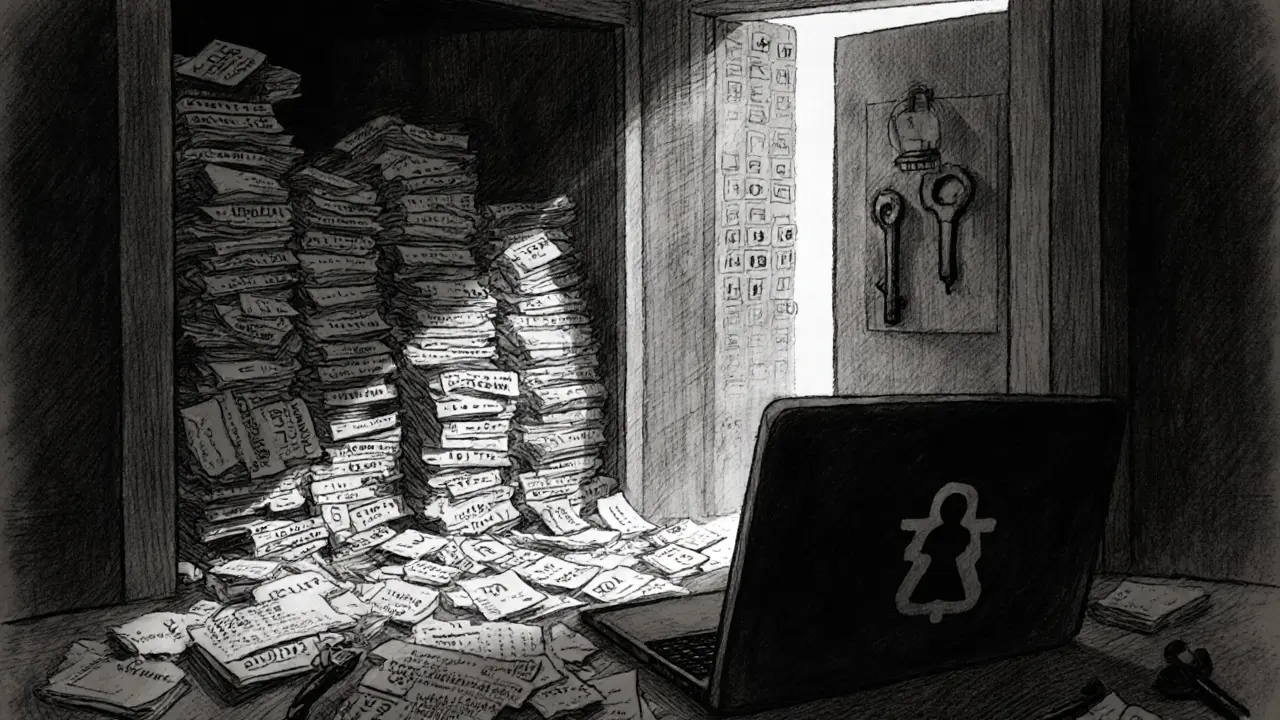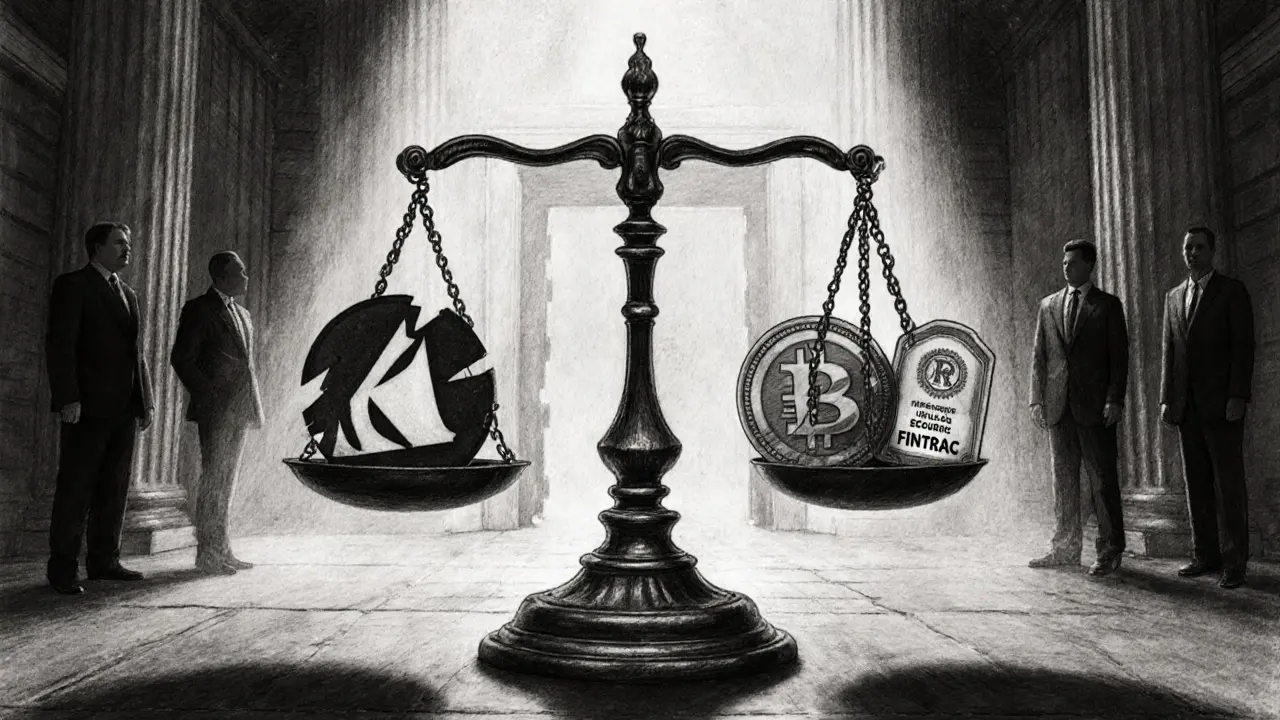Canadian Crypto Exchange Risk Checker
Please select an exchange to see details.
When you hear the name QuadrigaCX, the first thing that comes to mind is a cautionary tale of lost crypto, dead CEOs, and a $215million hole that still haunts Canadian traders. But beyond the headlines, what exactly was QuadrigaCX, how did it grow so fast, and why did it implode? This review unpacks the whole story - from its launch in a Vancouver loft to the multi‑agency investigations that followed - so you can spot red flags before trusting any platform with your digital assets.
TL;DR
- QuadrigaCX was Canada’s biggest crypto exchange from 2013‑2019, founded by Gerald Cotten and Michael Patryn.
- The platform relied on paper‑wallet cold storage and third‑party payment processors instead of a solid banking partnership.
- Internal fraud, fake accounts, and risky off‑exchange trading created a $115M shortfall.
- After Cotten’s sudden death, the exchange vanished, leaving 76,000 users with missing funds.
- Regulators (OSC, FinTRAC, FBI) now treat QuadrigaCX as a textbook example of crypto‑exchange failure.
What Was QuadrigaCX?
QuadrigaCX was the trading brand of BC‑numbered company 0984750 B.C. Ltd., operating from December2013 until its collapse in February2019. Founded in Vancouver on 4November2013 by 25‑year‑old Gerald Cotten and his former partner Michael Patryn, the exchange offered Canadians a local gateway to buy, sell and store major cryptocurrencies such as Bitcoin and Ethereum.
QuadrigaCX registered as a money‑services business with FinTRAC on 23December2013, just days before going live. Early on it installed Vancouver’s second Bitcoin ATM and raised C$850000 in a failed public‑offering attempt on the Canadian Securities Exchange.
Growth Trajectory & Business Model
From a modest C$7.4million of Bitcoin traded in 2014, the exchange vaulted to roughly C$1.2billion USD of Bitcoin volume in 2017, riding the global crypto boom. At its peak, QuadrigaCX served about 76000 Canadian clients, operated out of small offices in Vancouver and Toronto, and employed just four staff members.
The business model was simple: charge a commission on every trade. Because the platform lacked a dedicated Canadian bank account for high‑volume fiat movement, it funneled deposits through third‑party payment processors. This shortcut kept operating costs low but introduced cash‑flow bottlenecks that later crippled withdrawals.
Security and Custody Practices
In a 2014 interview, Cotten explained the exchange’s “paper‑wallet” strategy: “We just send money to them, we don’t need to go back to the bank every time we want to put money into it. We just send money from our Bitcoin app directly to those paper wallets, and keep it safe that way.” The cold‑storage wallets were stored in safe‑deposit boxes, a method that, while common in early crypto, lacked multi‑sig protection and real‑time auditing.
When the market crashed in late2018, users complained that fiat withdrawals were delayed for weeks. The reliance on external processors meant the exchange could not instantly move cash from its custodial accounts to users’ banks, creating a financial choke point.

Red Flags and Operational Weaknesses
Several incidents hinted at deeper problems before the final collapse:
- June2017 smart‑contract error: QuadrigaCX lost approximately C$14million worth of Ethereum due to a buggy contract, exposing technical inexperience.
- Scaling strain: Handling over $1billion in annual volume with only four employees meant accounting and compliance were severely understaffed.
- Opaque accounting: Internal records were stored in spreadsheets; no independent audit was ever performed.
- Founders’ criminal histories: Patryn (formerly Omar Dhanani) had prior convictions for identity theft and burglary, while Cotten’s background showed involvement in earlier online Ponzi schemes.
These signs should have triggered regulatory scrutiny, but the Canadian crypto landscape was still largely unregulated at the time.
The Collapse: Death, Fraud, and $215Million Gap
On 14January2019, news broke that Cotten had died suddenly while traveling in India, allegedly leaving the exchange without the passwords to its cold‑storage wallets. The narrative of “lost keys” captured global headlines, but the Ontario Securities Commission (OSC) later concluded that fraud, not a missing password, caused most of the shortfall.
Key findings from the OSC investigation:
- Approximately $115million was lost through fraudulent trading on Quadriga’s own platform - Cotten opened fake accounts, gave himself fictitious balances, and traded against unsuspecting clients.
- Another $28million vanished when Cotten moved client assets onto three external crypto platforms without disclosure.
- Personal misappropriation of millions for lifestyle expenses further drained the balance sheet.
In effect, the exchange operated like a Ponzi scheme: new deposits were used to cover earlier withdrawals, leaving almost no real assets when the cash‑flow crisis hit. By the time the company declared bankruptcy, it owed users about C$215million.
Multiple law‑enforcement bodies - the FBI, the U.S. IRS Criminal Investigation division, and Canada’s own Financial Transactions and Reports Analysis Centre (FinTRAC) - launched investigations into the missing assets and potential cross‑border money‑laundering.
Aftermath and Industry Impact
The QuadrigaCX saga sparked a wave of regulatory reforms across Canada. FinTRAC tightened its oversight of crypto‑MSBs, and provincial securities commissions introduced stricter licensing requirements for digital‑asset custodians. Exchanges now routinely undergo independent audits, adopt multi‑signature wallets, and maintain dedicated Canadian banking relationships to avoid the cash‑flow pitfalls that doomed QuadrigaCX.
For traders, the case reinforced a few hard‑earned lessons:
- Don’t keep all your crypto on a single centralized platform. Use hardware wallets or reputable custodians with proven audit trails.
- Check the background of founders and key executives. Prior criminal records or undisclosed aliases are a major red flag.
- Demand transparency on custody methods. Multi‑sig, insured cold storage is far safer than paper wallets in a safe‑deposit box.
- Monitor regulatory compliance. An exchange registered with FinTRAC and regularly audited is less likely to disappear overnight.
QuadrigaCX vs. Other Canadian Exchanges (2025 Snapshot)
| Exchange | Founded | Peak Daily Volume (2021) | Custody Method | Regulatory Status (2025) |
|---|---|---|---|---|
| QuadrigaCX | 2013 | $150M CAD | Paper‑wallet cold storage (no multi‑sig) | Bankrupt, under investigation |
| Coinsquare | 2014 | $300M CAD | Multi‑sig custodial wallets, insured | FINTRAC‑registered, audited |
| Kraken (Canada) | 2011 (global), 2020 (Canada) | $500M USD | Cold‑storage with institutional vaults | Registered in multiple jurisdictions, SOC2 compliant |
How to Vet a Crypto Exchange (Quick Checklist)
- Is the platform registered with the relevant financial regulator (e.g., FINTRAC in Canada)?
- Does it use multi‑signature, insured cold storage?
- Are the founders' backgrounds publicly documented?
- Is there an independent audit report available?
- Can you withdraw fiat directly to a Canadian bank without a third‑party processor?

Frequently Asked Questions
What happened to the $215million owed to QuadrigaCX users?
Most of the shortfall was traced to fraudulent trading by Gerald Cotten, who created fake accounts and moved client assets onto external platforms. Ongoing investigations by the OSC, FinTRAC, and the FBI aim to recover whatever remaining assets exist, but full restitution is unlikely.
Was the loss really caused by a lost password after Cotten’s death?
Later regulatory reports showed that the missing keys story was a cover for deeper fraud. While the password issue compounded the problem, the majority of the loss pre‑dated Cotten’s death.
Can I still file a claim against Quadriga’s bankruptcy?
Yes. Former users can submit a proof‑of‑claim to the court‑appointed trustee overseeing the liquidation. The process is lengthy and many claims receive only partial payouts.
How does QuadrigaCX’s failure affect current Canadian crypto regulation?
The case prompted tighter FINTRAC reporting standards, mandatory AML/KYC procedures, and a push for custodial insurance. New exchanges now must undergo periodic audits before they can accept Canadian customers.
Is it safe to keep crypto on any exchange after Quadriga?
No exchange is 100% risk‑free, but those that employ multi‑sig storage, transparent audits, and regulated banking partners drastically reduce the chance of a total loss. Always keep only what you need for trading on the exchange and store the rest in a hardware wallet.


Whoa! 🎭 The Quadriga saga reads like a blockbuster tragedy-high‑risk, no‑multisig, and a mysterious dead CEO. If you’re hunting a safe exchange, start by demanding transparent custody reports and multi‑signature wallets. Paper‑wallet storage? That's a red flag louder than a siren. Remember, crypto is only as secure as the weakest link, so always keep the bulk of your assets off‑exchange. 😱
Canada’s crypto scene could’ve been a shining example, but Quadriga proved how a rogue founder can wreck trust nationwide. Their flimsy banking ties and paper‑wallet circus show why we need home‑grown, regulation‑friendly platforms. Don’t let foreign hype blind you-insist on a solid Canadian bank partnership before you hand over your loonies. A truly Canadian exchange would have the audacity to be transparent from day one.
From a technical standpoint, QuadrigaCX exhibited a fundamental breach of cryptographic best‑practice protocols, specifically the absence of a multi‑signature custodial framework, thereby augmenting systemic counterparty risk. The reliance on paper‑based cold storage, devoid of rigorous audit trails, contravenes established compliance standards stipulated by FINTRAC. Moreover, the organization’s liquidity management was suboptimal, evidenced by the utilization of third‑party payment aggregators, which introduced additional settlement latency. In aggregate, these deficiencies constitute a composite failure mode that precipitated the observed capital inadequacy.
Hey folks, let’s take a step back and look at the bigger picture 🌱. Quadriga’s collapse teaches us that every crypto journey needs a safety net-think of your assets like seeds you plant, you wouldn’t dump them all in one pot. Diversify, use hardware wallets, and keep an eye on exchange governance. A healthy skepticism paired with optimism can turn this cautionary tale into a roadmap for smarter investing. Keep learning, stay vigilant, and you’ll grow stronger! 🚀
Frankly, Quadriga was the textbook example of professional incompetence masquerading as innovation. The founders’ shady pasts and opaque accounting should have set off alarms louder than any regulator’s siren. Their paper‑wallet scheme was a laughable excuse for a lack of proper risk mitigation. It’s astonishing that investors fell for such a transparent scam, highlighting a collective failure in due diligence across the board.
It’s encouraging to see the industry learning from Quadriga’s mistakes-many newer platforms now prioritize insured multi‑sig storage and regular audits. While no system is foolproof, the heightened regulatory scrutiny in Canada is a positive step toward protecting everyday users. Keep supporting exchanges that are transparent and willing to evolve, and the ecosystem will become far more resilient.
Wow, the Quadriga story is like a wild ride through a neon‑lit cyber‑carnival gone horribly wrong! 🎡💥 The glitter of rapid growth hid a shaky foundation-paper wallets, secret accounts, and a founder who vanished like a magician. Today’s exchanges that sparkle with multi‑sig vaults and crisp audit reports are the true stars of the show. So, next time you pick a platform, look for the backstage passes: regulatory compliance, insurance, and clear custody policies. Trust the ones that keep the lights on, not the ones that disappear in a puff of smoke.
Listen, if you thought Quadriga was just a minor slip‑up, you’re seriously misguided. This wasn’t a hiccup; it was a massive betrayal that left thousands of Canadians broke. The whole operation was built on dodge‑the‑law shortcuts and lazy security. Don’t be fooled by slick marketing-demand real banking relationships and proper insurance, or you’ll end up another headline.
Yo, if u wanna avoid a repeat of this mess, make sure the exchange has real bank accounts and not just some sketchy paper wallets. Look for multi‑sig storage and insurance, that’s the real deal. Also, check if they’re registered with FinTRAC – that’s a good sign they’re playing by the rules. Stay safe out there!
Friends, the Quadriga debacle is a wake‑up call to all of us who love crypto. It shows why we must stay educated about custody solutions and regulatory compliance. Use hardware wallets for the bulk of your holdings, and keep only what you need for active trading on the exchange. By spreading risk and demanding transparency, we can build a stronger, more trustworthy ecosystem together.
Consider, if you will, the delicate equilibrium between innovation and oversight; the collapse of QuadrigaCX serves as a stark reminder that unchecked ambition, when divorced from rigorous custodial safeguards, can cascade into systemic failure. One must ask, not in a rhetorical sense, but as a genuine inquiry, how many other platforms still operate under similarly opaque conditions? The answer lies in the collective vigilance of the community, coupled with enforceable regulatory frameworks.
It is evident, upon rigorous examination, that QuadrigaCX epitomized a gross dereliction of fiduciary duty; the absence of multi‑signature mechanisms and reliance on antiquated paper‑wallet storage constitute unequivocal negligence. Furthermore, the founders’ undisclosed criminal histories exacerbated the inherent risk profile, rendering the enterprise fundamentally unsound. Such an egregious failure warrants not only regulatory censure but also a thorough reassessment of industry standards.
While acknowledging the severe shortcomings of QuadrigaCX, it is also important to recognize the broader context in which many early crypto ventures operated; the regulatory environment was, at best, nascent and uneven. Constructive dialogue between regulators, exchanges, and users can foster improvements that mitigate future risks. By embracing transparency and collaborative oversight, the community can move toward a more resilient ecosystem.
Another crypto “innovation” that turned out to be a spectacular failure.
Honestly, reading about Quadriga is like watching a tragic play where the hero walks off stage and everything collapses. The drama of a dead CEO, hidden wallets, and empty promises is enough to make anyone cringe. It shows that in the world of crypto, you must keep your eyes open and your wallet safe.
It must be noted, contrary to popular sentiment, that the failure of QuadrigaCX does not inherently indict the entire cryptocurrency sector; rather, it underscores the necessity for rigorous institutional controls and transparent governance structures. While some may extrapolate this incident as a wholesale condemnation of digital assets, such an interpretation neglects the numerous exchanges that have adopted best‑practice custodial frameworks and comply fully with statutory obligations.
Think about it: a platform that promises freedom but locks away your keys in a box no one can open. That's a paradox we keep seeing in crypto-claims of decentralization shadowed by central points of failure. The lesson? Question everything, especially when trust is handed over to a single individual.
Great recap! 👍 Keep diversifying and use hardware wallets for safety. 🚀
Don't trust any exchange that doesn't show real banking partners-stay safe.
Reading through the Quadriga case really opens a Pandora’s box of lessons for anyone dabbling in crypto. First, the reliance on paper‑wallet cold storage without multi‑signature safeguards is a glaring security lapse that any seasoned investor should flag immediately. Second, the lack of a transparent audit trail made it impossible for users to verify the true state of the exchange’s reserves. Third, the use of third‑party payment processors created a bottleneck that stalled fiat withdrawals, turning a liquidity issue into a full‑blown crisis. Fourth, the founders’ dubious backgrounds should have triggered deeper scrutiny from both regulators and potential customers. Fifth, the “lost password” narrative, while dramatic, was later revealed to be a convenient cover for deeper fraud-a reminder to always look beyond the headline. Sixth, the regulatory vacuum at the time allowed the platform to operate with minimal oversight, highlighting the importance of robust FINTRAC registration today. Seventh, the case underscores why custodial insurance and regular independent audits are non‑negotiable for any trustworthy platform. Eighth, the community’s response after the collapse-pushing for stricter compliance-shows that collective pressure can drive positive change. Ninth, the case demonstrates the value of diversifying holdings across multiple wallets and exchanges to mitigate single‑point failures. Tenth, it reminds us that crypto education is paramount; the more users understand custody mechanisms, the less likely they are to fall prey to opaque schemes. Eleventh, the involvement of multiple law‑enforcement agencies illustrates that cross‑border cooperation can be effective in tracking missing assets. Twelfth, the fallout has spurred Canadian exchanges like Coinsquare and Kraken to adopt multi‑sig vaults and institutional banking relationships, which is a silver lining. Thirteenth, for newcomers, it’s a clear signal to prioritize platforms that openly publish their custody policies and insurance coverage. Fourteenth, the whole saga is a testament to the adage: “If it sounds too good to be true, it probably is.” Finally, staying vigilant, demanding transparency, and keeping a portion of your crypto in a hardware wallet are the best defenses we have against repeats of such disasters. 🌟